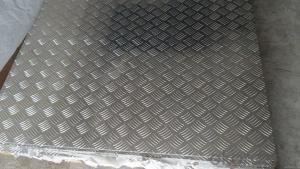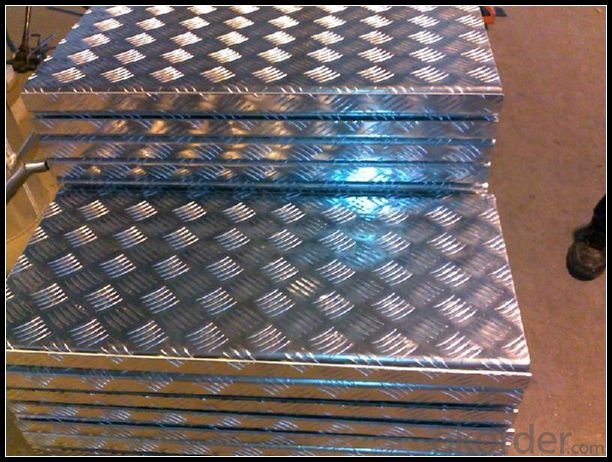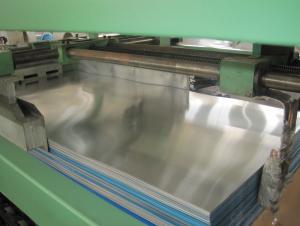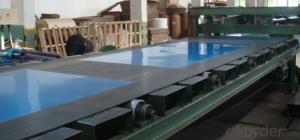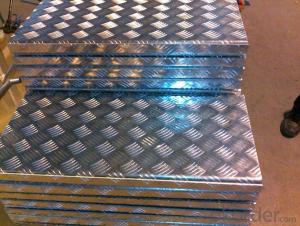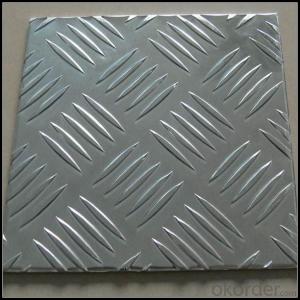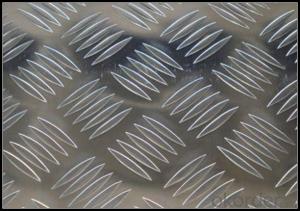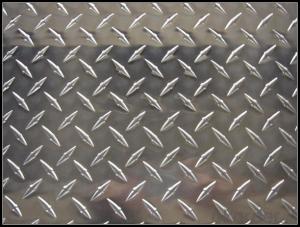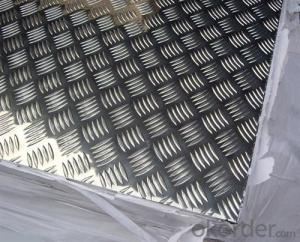1 Inch Thick Aluminum Sheets - Five Bar Treadplate Aluminium Panel AA1xxx for Tool Box
- Loading Port:
- Shanghai
- Payment Terms:
- TT OR LC
- Min Order Qty:
- 5 m.t.
- Supply Capability:
- 10000 m.t./month
OKorder Service Pledge
OKorder Financial Service
You Might Also Like
Specification
1. Specification of Five Bar Treadplate Aluminium Panel AA1XXX for Tool Box
Alloy Number | AA1XXX,AA3XXX,AA5XXX |
Temper | H12, H14, H16, H18, H22, H24, H26, H32, HO, F |
Thickness | 0.1mm – 500mm |
Width | 10mm- 2200mm |
Standard | GB/T3880-2006, ASTM, ISO, EU standard |
2. Application of Five Bar Treadplate Aluminium Panel AA1XXX for Tool Box
Transfporation, vehicle, antiskid plate,toolbox,canopy body,
3. Feature of Five Bar Treadplate Aluminium Panel AA1XXX for Tool Box
Surfact Quality :
Be free from Oil Stain, Dent, Inclusion, Scratches, Stain, Oxide Dicoloration, Breaks, Corrosion, Roll Marks, Dirt Streaks and other defect which will interfere with use,
Mechenical Property:
Chemical Composite and Mechanical Property
4. Certificate:
SGS and ROHS(if client request, paid by client), MTC(plant provided), Certificate of Origin(FORM A, FORM E, CO), Bureau Veritas and SGS (if client request, paid by client), CIQS certificate
5. Image of Five Bar Treadplate Aluminium Panel AA1XXX for Tool Box
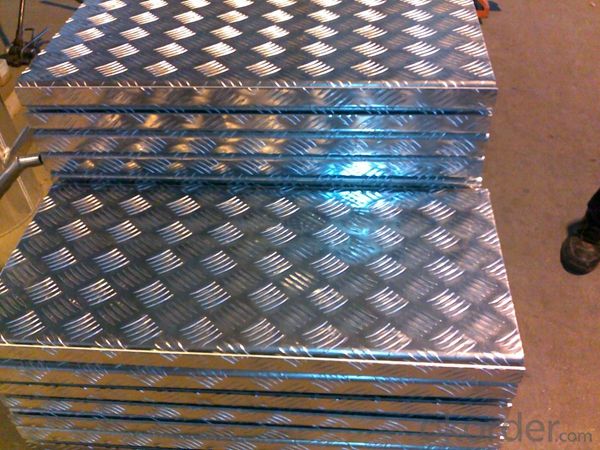
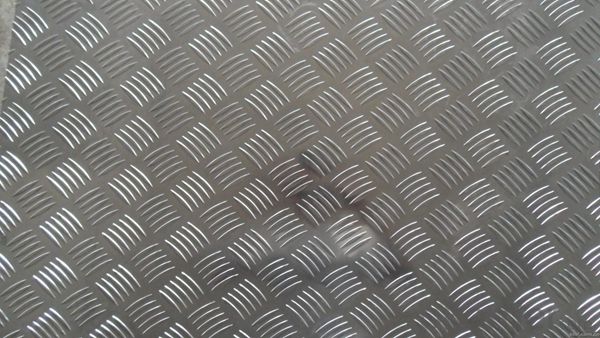
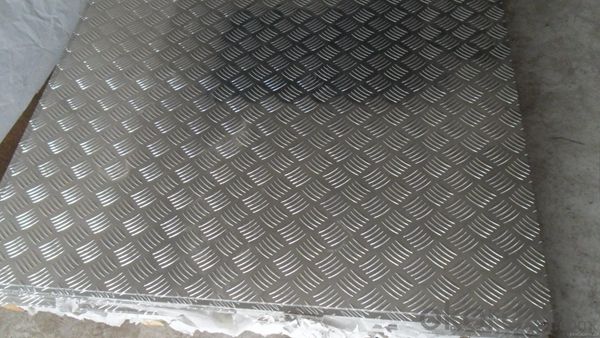
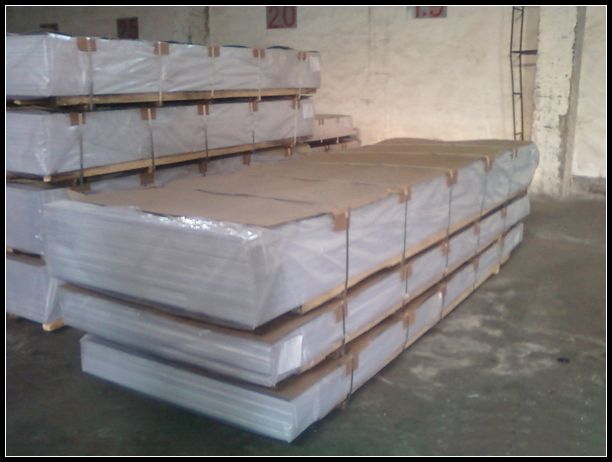
6. Package and shipping of Five Bar Treadplate Aluminium Panel AA1XXX for Tool Box
First, plastic cloth with drying agent inside; Second, Pearl Wool ; Third, wooden cases with dry agent , fumigation wooden pallets, aluminum surface could cover blue PVC film
7. FAQ
1) What is the delivery time?
Dpends on actual order, around 20 to 35 days
2)What is the QC system:
We have QC staff of 20 persons and advanced equipment, each production is with MTC traced from Aluminum ingot lot.
3) What market do you mainly sell to?
Australia, America, Asia, Middle East, Western Europe, Africa etc
- Q: What are the different surface finishes available for aluminum sheet?
- There are several different surface finishes available for aluminum sheet, each offering unique aesthetic and functional properties. Some of the common surface finishes for aluminum sheet include: 1. Mill Finish: This is the most basic and widely used surface finish for aluminum sheet. It has a smooth, raw appearance with visible grain lines from the manufacturing process. 2. Brushed Finish: This finish is achieved by brushing the aluminum sheet with a fine abrasive material, creating a pattern of fine lines. It provides a satin-like appearance and is often used for decorative purposes. 3. Anodized Finish: This finish is created through an electrochemical process called anodizing, which forms a durable oxide layer on the surface of the aluminum sheet. Anodized finishes are available in various colors and offer enhanced corrosion resistance. 4. Polished Finish: This finish involves polishing the aluminum sheet to a high gloss or mirror-like surface. It provides a reflective and elegant appearance, making it suitable for decorative applications. 5. Embossed Finish: This finish involves embossing patterns or textures onto the surface of the aluminum sheet. It adds texture and visual interest to the sheet, making it ideal for architectural and decorative purposes. 6. Powder Coated Finish: In this finish, a dry powder is applied to the surface of the aluminum sheet and then heated to form a protective and decorative coating. Powder coated finishes are available in a wide range of colors and offer excellent durability and resistance to weathering. These are just a few of the many surface finishes available for aluminum sheet. The choice of finish depends on the intended application, desired appearance, and specific performance requirements.
- Q: Can aluminum sheets be anodized in different colors?
- Aluminum sheets have the capability to undergo anodization in various colors. Anodization involves an electrochemical procedure that enhances the natural oxide layer on the surface of aluminum. By submerging the aluminum sheet in an electrolyte bath and applying an electric current, a controlled oxidation process takes place, resulting in a thick and long-lasting oxide layer on the surface. Throughout the anodization process, different dyes can be introduced into the electrolyte bath, enabling the aluminum to absorb the dye particles and generate a colored oxide layer. This allows for a wide array of colors to be achieved, including red, blue, green, yellow, and numerous others. Furthermore, the brightness and tone of the color can be regulated by adjusting factors such as the dye concentration and the voltage applied during anodization. The anodized layer that forms on the aluminum sheet not only offers a vibrant and visually appealing appearance but also enhances its resistance to corrosion and durability. This makes anodized aluminum sheets an exceptional choice for architectural, decorative, and industrial applications where customization of color is desired while retaining the inherent advantages of aluminum.
- Q: just bought a hobart handler 140 (already love it), and was just wondering on what gas to use for aluminum. my welder will be set up for mild steel (75% argon 25% CO2). it would be nice to be able to use this mix with aluminum as well, as it would be easy to just switch spools of wire, but the manual says to use a 100% argon mix when welding with aluminum. will the 25% CO2 make a difference welding aluminum?
- You MUST use 100% Ar for MIG welding aluminum. Molten Al is highly reactive. Al powder is the active ingredient in thermite, for example. It will react with CO2, stripping away the oxygen and creating a nasty mess. Also, you really need a MIG welder with twice as much current output. along the lines of 200-300 amps. 130 amps will not perform well even with a spool gun, and running the weak, prone-to-jamming .030 Al wire. You could try to do it that way, but I would not advise. (There is no way in hell you'd be able to cram wimpy .030 Al wire through a 6 foot traditional welding lead. It'll kink and jam after 5 seconds.) MIG welding aluminum REQUIRES using the high-current, high feed speed, spray transfer mode. Here are some typical parameters: 030 wire, 500 IPM, 22 volts. 120-130 amps. 035 wire, 500 IPM, 23 volts, 150 amps. 045 wire, 400 IPM, 24 volts, 200 amps. EDIT, the guy above me has the right idea. They use electricity to force the reaction between aluminum oxide (dissolved in cryolite) and carbon, producing molten Al and CO2 gas. Normally the reaction would tend to go the other way. Aluminum has a higher affinity for oxygen.
- Q: Can the aluminum sheets be used for manufacturing audio amplifier cases?
- Yes, aluminum sheets can be used for manufacturing audio amplifier cases. Aluminum is a popular choice for casing in audio equipment due to its lightweight yet durable properties. It provides excellent heat dissipation, which is crucial for audio amplifiers that generate heat during operation. Furthermore, aluminum can be easily machined and formed into various shapes, allowing for customization and aesthetics in the design of the amplifier case. Overall, aluminum sheets are a suitable material for manufacturing audio amplifier cases.
- Q: What are the properties of anodized aluminum sheets?
- Anodized aluminum sheets have several distinct properties that make them highly desirable for various applications. Firstly, anodized aluminum sheets have a protective oxide layer on their surface, which enhances their corrosion resistance. This oxide layer is formed through an electrochemical process called anodization, where the aluminum sheet is treated with an electric current in an acid electrolyte solution. This protective layer makes anodized aluminum sheets more durable and capable of withstanding harsh environments, which makes them suitable for outdoor applications. Another notable property of anodized aluminum sheets is their enhanced scratch resistance. The anodization process not only creates a protective layer but also hardens the surface of the aluminum, making it more resistant to scratches and wear. This property is particularly advantageous in applications where the aluminum sheets are subjected to frequent handling or abrasive conditions. Furthermore, anodized aluminum sheets can be produced in a wide range of colors. The anodization process allows for the integration of dyes or pigments into the oxide layer, resulting in a variety of vibrant color options. This property makes anodized aluminum sheets popular in architectural and decorative applications, as they can be customized to match specific design requirements. Additionally, anodized aluminum sheets have excellent thermal and electrical conductivity. The process of anodization does not significantly affect these inherent properties of aluminum. Therefore, anodized aluminum sheets can efficiently dissipate heat and conduct electricity, making them suitable for applications such as heat sinks, electronic enclosures, and electrical components. In summary, the properties of anodized aluminum sheets include enhanced corrosion resistance, improved scratch resistance, a wide range of color options, and excellent thermal and electrical conductivity. These properties make anodized aluminum sheets a versatile and durable material for various industries and applications.
- Q: Can aluminum sheet be painted or coated after fabrication?
- Yes, aluminum sheet can be painted or coated after fabrication. The surface of the aluminum sheet can be prepared by cleaning and etching to ensure proper adhesion of the paint or coating.
- Q: What industries use aluminum sheets?
- Aluminum sheets are widely used in various industries due to their numerous advantageous properties. One significant industry that utilizes aluminum sheets is the automotive industry. Aluminum is lightweight, yet strong, making it an ideal material for manufacturing car bodies and parts. It helps to reduce the overall weight of the vehicle, thus improving fuel efficiency and reducing emissions. Another industry that heavily relies on aluminum sheets is the aerospace industry. Aluminum's high strength-to-weight ratio makes it suitable for aircraft construction. It is used in the manufacturing of airplane frames, wings, and fuselages. The lightweight nature of aluminum contributes to increased fuel efficiency and allows for larger payloads. The construction industry is also a major consumer of aluminum sheets. Aluminum's corrosion resistance and durability make it an excellent choice for building materials. It is commonly used for roofing, siding, windows, doors, and structural components in both residential and commercial construction projects. In the packaging industry, aluminum sheets are extensively used for the production of beverage cans. Aluminum cans provide a lightweight and portable packaging solution, while also ensuring product freshness and protection from light and air. Furthermore, the electrical industry utilizes aluminum sheets for various applications. Aluminum's excellent conductivity makes it suitable for electrical transmission lines, cables, and wiring. It is also used in the production of heat sinks and electrical enclosures. Other industries that employ aluminum sheets include the marine industry, where it is used for boat building and ship construction due to its resistance to corrosion in saltwater environments. Additionally, aluminum sheets are used in the manufacturing of household appliances, such as refrigerators, ovens, and washing machines, due to their durability, lightweight, and heat conductivity properties. Overall, the versatility, strength, lightweight nature, and corrosion resistance of aluminum sheets make them indispensable in a wide range of industries, including automotive, aerospace, construction, packaging, electrical, marine, and household appliances.
- Q: What is the fatigue life of aluminum sheets?
- The fatigue life of aluminum sheets refers to the number of cycles that the material can withstand before failure occurs under cyclic loading conditions. The fatigue life of aluminum sheets can vary depending on various factors such as the alloy composition, thickness, surface finish, loading conditions, and environmental factors. Aluminum is known for its relatively high fatigue strength compared to other materials, making it a popular choice in various industries including aerospace, automotive, and construction. The fatigue life of aluminum sheets is typically influenced by the presence of microstructural defects such as inclusions, voids, and grain boundaries. To determine the fatigue life of aluminum sheets, fatigue tests are conducted using standardized procedures such as ASTM E466 or ASTM E606. These tests involve subjecting the material to cyclic loading conditions, typically at a constant stress or strain amplitude, while monitoring the number of cycles required for failure to occur. The results are then used to generate an S-N curve, which represents the relationship between the applied stress or strain amplitude and the number of cycles to failure. The S-N curve provides valuable information about the fatigue life of aluminum sheets, indicating the stress or strain levels at which the material can withstand a certain number of cycles before failure. It is important to note that the fatigue life of aluminum sheets can be improved through various methods such as alloying, heat treatment, surface treatment, and proper design considerations. In conclusion, the fatigue life of aluminum sheets is a critical factor to consider when designing components or structures subjected to cyclic loading conditions. Understanding the specific properties and characteristics of the aluminum alloy, along with proper testing and analysis, can help determine the fatigue life and ensure the safe and reliable performance of aluminum sheets in various applications.
- Q: I am looking to purchase a pressure cooker and the size that i want comes in aluminum while alot of the others are made from stainless steel. I am wondering if the metal makes a difference in the funtionality and if one doesn't stand up as well as the other.
- Hi.. Choose the one you like. Because, there is no much difference with Aluminum and Stainless steel pressure cookers in either cooking or in weight (you must have seen the weight when you went to the store). But the Stainless steel pressure cooker will be little bit costly than the aluminum one. The pitting inside of the cooker can be prevented if you clean and dry it after each and every use. You should not keep water at the bottom of the cooker for a long time. Any pressure cooker will lasts longer if we follow proper precautions/instructions as per the use and care guide. If we speak about Gasket and Pressure valves, you need to change the gasket once in every year if you use the cooker regularly (depends on the usage) and pressure valves should be replaced as needed for any pressure cooker. I am cooking in pressure cooker from 12 years. Had to throw away my first one 'coz lack of proper care. And now, i am using my second one from 8 years twice a day. There are lot of stainless steel pressure cookers probably because they are also upgraded (from aluminum to stainless steel) like every thing else.
- Q: This question asks for the common types of aluminum sheet windows and doors that are available in the market.
- <p>Common types of aluminum sheet windows and doors in the market include sliding windows, casement windows, fixed windows, and awning windows. For doors, there are sliding doors, swing doors, folding doors, and automatic doors. Each type has specific features and applications, such as sliding windows being space-saving and easy to operate, while casement windows offer better ventilation. Sliding doors are popular for their smooth operation and minimal space requirement, and swing doors are traditional and widely used for their durability and security. These aluminum products are valued for their strength, durability, and low maintenance requirements.</p>
Send your message to us
1 Inch Thick Aluminum Sheets - Five Bar Treadplate Aluminium Panel AA1xxx for Tool Box
- Loading Port:
- Shanghai
- Payment Terms:
- TT OR LC
- Min Order Qty:
- 5 m.t.
- Supply Capability:
- 10000 m.t./month
OKorder Service Pledge
OKorder Financial Service
Similar products
Hot products
Hot Searches
Related keywords
